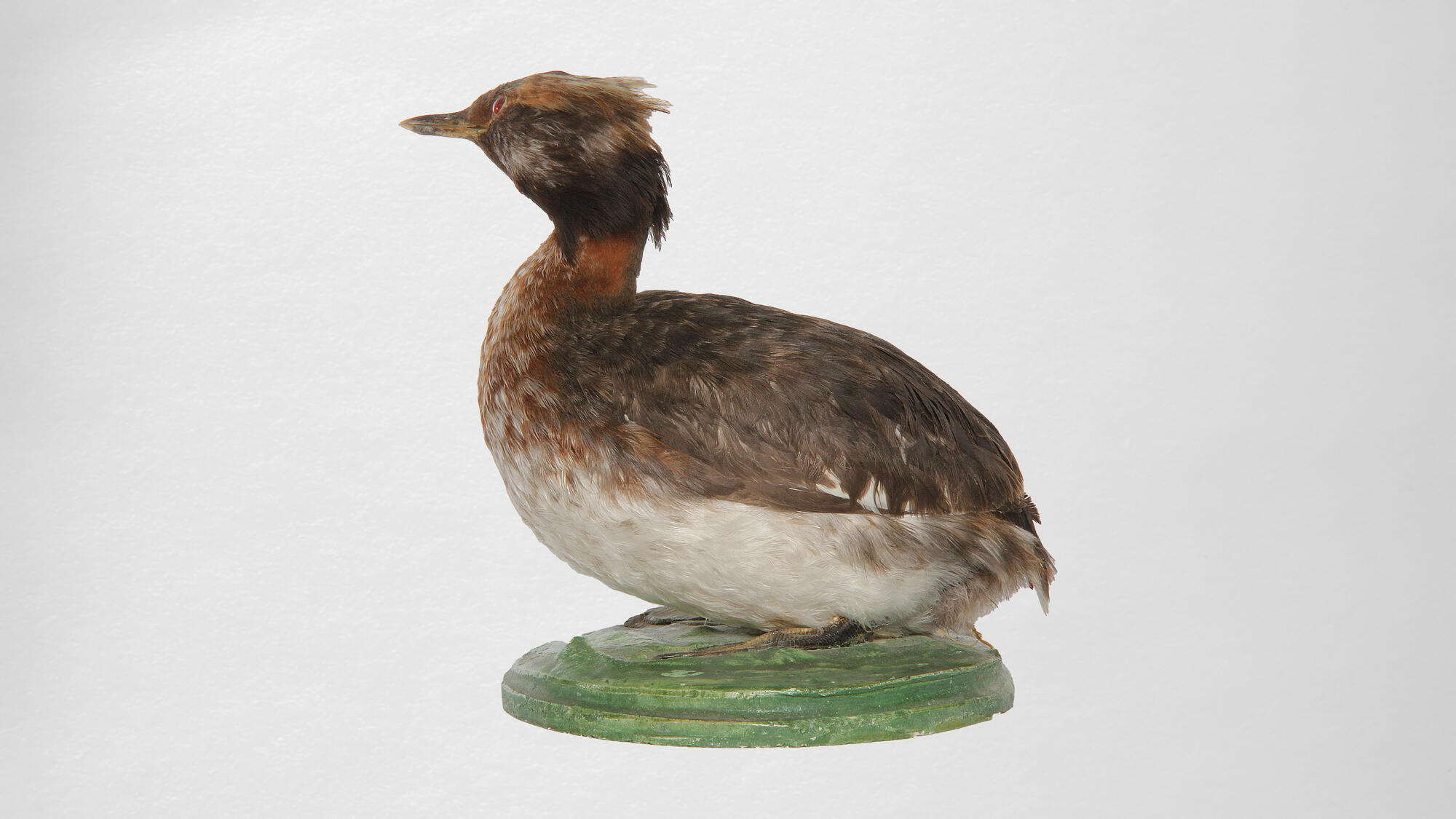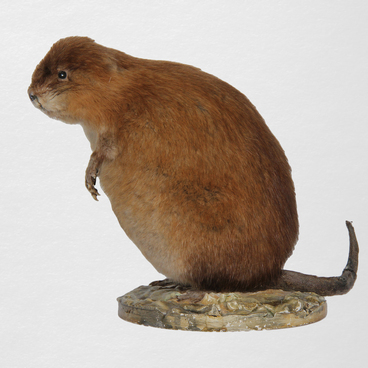The eared grebe, or black-necked grebe, belongs to the grebe (Podicipedidae) family and nests mainly in Europe, Central and South Asia, western North America and the southern tip of Africa. This is a relative of the red-necked grebe, or horned grebe, which lives in the temperate and sometimes in the subarctic zones of Eurasia and North America.
The eared grebe is from 28 to 34 centimeters long. It does not weigh much — from 300 to 400 grams. In breeding plumage both males and females have their a black upper body and neck, and the abdomen is white. There are elongated golden brown feathers behind the eyes.
Young birds and adults in winter plumage are colored similarly: upper body, back of the neck, nape, crown and forehead are grayish-brown, light spots behind the ears; the underside and sides of the body, the front and sides of the neck, and the throat are white. In flight, white feathers are visible on the bird. The iris of the eyes is red.
Of all the grebes, the eared grebe is the most gregarious one. It nests in colonies from five or six to several hundred pairs, and prefers to keep in flocks. It often settles with gulls, terns and other birds. The eared grebe chooses to live in overgrown stagnant reservoirs or rivers with a slow current. It spends most of the time on the water and prefers to dive in case of danger.
The grebe feeds mainly on swimming beetles, bedbugs, larvae of mosquitoes and dragonflies, mollusks. Sometimes it eats small fish and plant remains. It usually hunts in thin thickets of reeds or cattails. To get food, it often dives, spends an average of 14 seconds under water.
For most of the year, this bird is silent, makes sounds mainly during the mating season: a loud whistle “pee-pee”, turning into a trill or chirping, as well as a low grumble “tr-rr”. If someone bothers the bird at the nest, it hides in the thickets and whistles.
The grebe builds nests from plant material. The nests are floating, only occasionally located on the reed floor. The bird tries to hide them in thin thickets of reeds, cattails, sedges and water soldiers, on muddy silt.
The diameter of the nest reaches 30 centimeters, the height is from 16 to 45 centimeters, and above the water it stands out only 2.5–7.5 centimeters. The clutch consists of 3-5 whitish-greenish eggs without pattern. During incubation, they get dirty with rotting plants, sometimes so much that they turn black.
Small chicks are darker than that of other grebes, almost black from above, with a striped head. On the body there are no stripes or they are barely outlined, the beak is red with two dark ring stripes. The hatchlings become independent at the age of three weeks or a little later. Sexual maturity occurs in the first year of life.
The eared grebe is from 28 to 34 centimeters long. It does not weigh much — from 300 to 400 grams. In breeding plumage both males and females have their a black upper body and neck, and the abdomen is white. There are elongated golden brown feathers behind the eyes.
Young birds and adults in winter plumage are colored similarly: upper body, back of the neck, nape, crown and forehead are grayish-brown, light spots behind the ears; the underside and sides of the body, the front and sides of the neck, and the throat are white. In flight, white feathers are visible on the bird. The iris of the eyes is red.
Of all the grebes, the eared grebe is the most gregarious one. It nests in colonies from five or six to several hundred pairs, and prefers to keep in flocks. It often settles with gulls, terns and other birds. The eared grebe chooses to live in overgrown stagnant reservoirs or rivers with a slow current. It spends most of the time on the water and prefers to dive in case of danger.
The grebe feeds mainly on swimming beetles, bedbugs, larvae of mosquitoes and dragonflies, mollusks. Sometimes it eats small fish and plant remains. It usually hunts in thin thickets of reeds or cattails. To get food, it often dives, spends an average of 14 seconds under water.
For most of the year, this bird is silent, makes sounds mainly during the mating season: a loud whistle “pee-pee”, turning into a trill or chirping, as well as a low grumble “tr-rr”. If someone bothers the bird at the nest, it hides in the thickets and whistles.
The grebe builds nests from plant material. The nests are floating, only occasionally located on the reed floor. The bird tries to hide them in thin thickets of reeds, cattails, sedges and water soldiers, on muddy silt.
The diameter of the nest reaches 30 centimeters, the height is from 16 to 45 centimeters, and above the water it stands out only 2.5–7.5 centimeters. The clutch consists of 3-5 whitish-greenish eggs without pattern. During incubation, they get dirty with rotting plants, sometimes so much that they turn black.
Small chicks are darker than that of other grebes, almost black from above, with a striped head. On the body there are no stripes or they are barely outlined, the beak is red with two dark ring stripes. The hatchlings become independent at the age of three weeks or a little later. Sexual maturity occurs in the first year of life.



